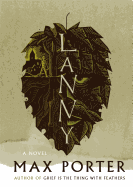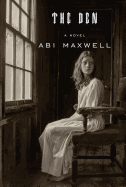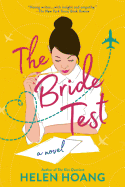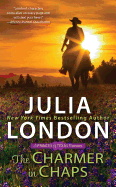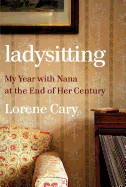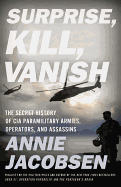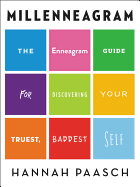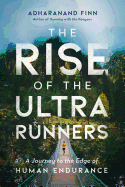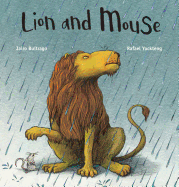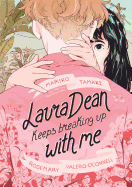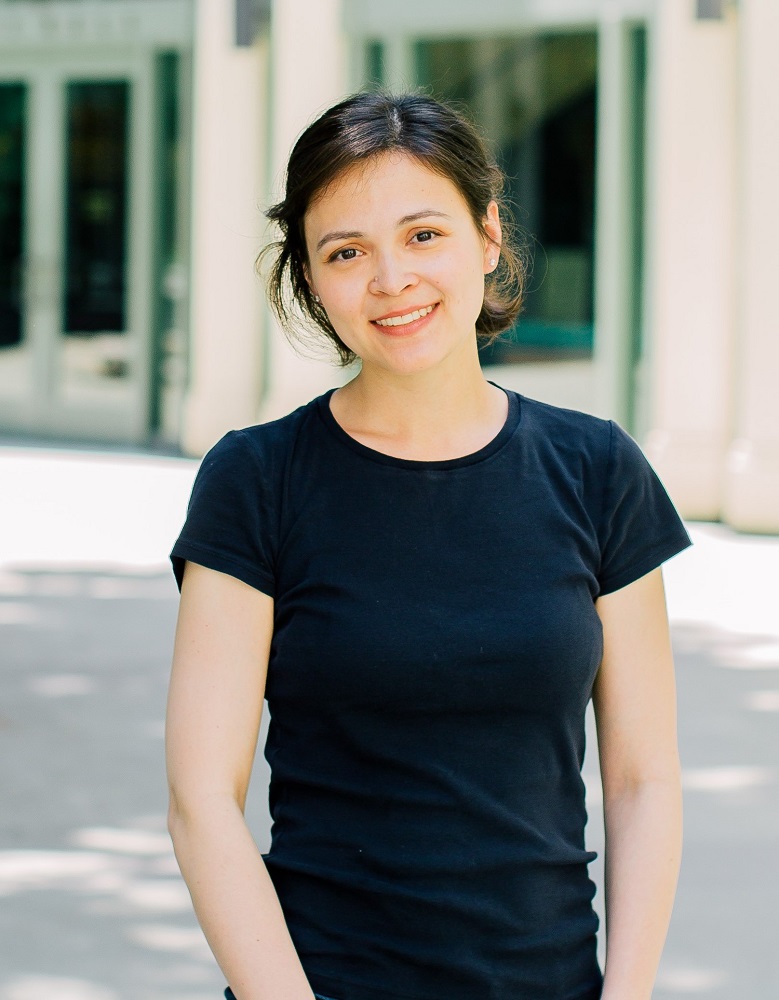 |
| photo: Eric Kieu |
Helen Hoang's debut novel, The Kiss Quotient, became a breakout hit and has been acquired by Pilgrim Media Group for a movie adaptation. The Kiss Quotient features a brilliant female lead with autism--which Hoang also has--and a half-Vietnamese man as her love interest. Her follow-up, The Bride Test (reviewed below), is about a young Vietnamese woman who's brought to the U.S. by a Vietnamese American mother to be a potential bride for her son, who has autism. In her author's note, Hoang mentions that her heroine is inspired by Hoang's mother, a former refugee and successful businesswoman, who died recently. Hoang lives in San Diego, Calif., with her husband and two children.
Did your mother read The Bride Test? How would she feel about Co Nga arranging a mail-order bride for her son?
No, my mom never read the book. But my aunt tried to arrange a wife for my cousin in much the same manner [as in the book], and my mom was aware of that. She didn't seem to think the idea was that outrageous, though she was never very meddling with my siblings and me.
Why does Co Nga choose a woman from Vietnam, instead of from the local Vietnamese American community?
When my aunt tried to arrange a marriage for my cousin, she spoke to women in Vietnam because the Vietnamese American women she knew were either uninterested in her son or not up to her standards in terms of Vietnamese traditions and values.
What were some of those standards? And what was the result of her matchmaking attempt?
My aunt was unsuccessful. Her son refused to meet any of the girls she liked from Vietnam and eventually married a Filipino American woman. I believe my aunt wanted him to marry a woman who spoke Vietnamese and would be a homemaker, practice Buddhism, give her grandbabies and take care of her in her old age.
Your author's note says you interviewed your mother for this book, about her experiences growing up poor and as a refugee. What was the biggest revelation for you during these discussions?
Growing up, I often thought my mom worked not only by necessity, but by preference. In other words, she was a workaholic, and sometimes I was resentful of this when I was a kid. Through these conversations with my mom, I came to understand why she was compelled to work so much and I could better empathize with her. Not only was she providing for her family and achieving financial security, but she was earning her own sense of worth. That was a heartbreaking realization for me--that her sense of self-worth was dependent on how much money she made.
 How has writing about people with autism helped you in your daily life?
How has writing about people with autism helped you in your daily life?
Writing these books has helped me process and understand my own autism so I can better communicate my needs with the people in my life and advocate for myself. For example, as I wrote The Bride Test, I finally understood why I bring books to wedding receptions. These events are truly overwhelming to me and because I'm physically trapped there, I read in an attempt to escape into myself. Now, instead of bringing a book to a wedding, I can leave early and it's okay. People don't get angry.
Your voice, and those of your protagonists, are specific and distinctive. What have readers told you they've learned the most from your characters and stories?
From what I've heard, it is eye-opening to read from the perspective of an autistic and/or Asian/Asian American character.
Regarding the autistic perspective, readers have appreciated learning about the specific challenges facing autistic people, but they've also remarked that they were happy to see that people of different neurotypes still have the same basic emotional needs and insecurities as most everyone else.
Khai's brother, Quan, has made memorable appearances in The Kiss Quotient and The Bride Test, and steps onto center stage in your next book. Anything juicy you can tell us about it?
I've been conceptualizing Quan's book as a gender-swapped Sabrina, where instead of the chauffeur's daughter and the two rich brothers, we have the chef's son and the two rich sisters.
You write about people who rarely get to be the center of Westernized stories. The couple in The Kiss Quotient include a half-Vietnamese man (who's hot, not nerdy!), while both leads in The Bride Test are of Vietnamese descent, though one is half Vietnamese. Any plans for a story with both leads being 100% Vietnamese?
For Quan's book, his love interest is Chinese American, and my next contracted books after this feature Michael's sisters from The Kiss Quotient, who are all half Vietnamese. I don't have specific plans to write a story with both leads being 100% Vietnamese, but I'm certainly not ruling it out. --Elyse Dinh-McCrillis, blogger at Pop Culture Nerd
Helen Hoang: Writing from the Heart
 In Forward Me Back to You by Mitali Perkins (Farrar, Straus and Giroux, $17.99, 14-up) two teens join their youth group's trip to Kolkata. Mitali Perkins expertly explores personal identity, faith, trauma and ethnocentrism, cleverly using a dual narrative to depict both points of view.
In Forward Me Back to You by Mitali Perkins (Farrar, Straus and Giroux, $17.99, 14-up) two teens join their youth group's trip to Kolkata. Mitali Perkins expertly explores personal identity, faith, trauma and ethnocentrism, cleverly using a dual narrative to depict both points of view.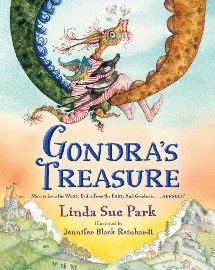 Gondra's Treasure by Linda Sue Park, illus. by Jennifer Black Reinhardt (Clarion, $17.99), is a picture book for readers ages 4-8 that features a young dragon whose "mom's family comes from the West" and "dad's family is from the East."; Gondra "was born somewhere in the middle." Young Gondra playfully explores the benefits of inheriting two very different cultural backgrounds.
Gondra's Treasure by Linda Sue Park, illus. by Jennifer Black Reinhardt (Clarion, $17.99), is a picture book for readers ages 4-8 that features a young dragon whose "mom's family comes from the West" and "dad's family is from the East."; Gondra "was born somewhere in the middle." Young Gondra playfully explores the benefits of inheriting two very different cultural backgrounds. The Gilded Wolves by Roshani Chokshi (Wednesday Books/Macmillan, $18.99, 12-up) features a band of teens on the fringes of society working together to pull off Mission Impossible-level stunts to regain pieces of an inheritance. Chokshi's third-person narrative slips easily between the teens' perspectives, granting the reader inside views of their loving, tangled lives.
The Gilded Wolves by Roshani Chokshi (Wednesday Books/Macmillan, $18.99, 12-up) features a band of teens on the fringes of society working together to pull off Mission Impossible-level stunts to regain pieces of an inheritance. Chokshi's third-person narrative slips easily between the teens' perspectives, granting the reader inside views of their loving, tangled lives.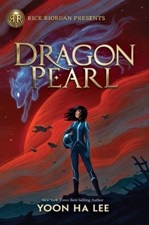 In Yoon Ha Lee's middle-grade novel, Dragon Pearl (Rick Riordon Presents/Disney-Hyperion, $16.99), 13-year-old Min, who is a fox spirit ("gumiho") masquerading as a human, has a dismal life. Her family receives word that her brother has been accused of deserting the army to search for the Dragon Pearl, "a mystical orb with the ability to... transform"--or destroy--"an entire planet in a day." Min won't allow her brother's reputation to be ruined; she runs away to find Jun and clear his name.
In Yoon Ha Lee's middle-grade novel, Dragon Pearl (Rick Riordon Presents/Disney-Hyperion, $16.99), 13-year-old Min, who is a fox spirit ("gumiho") masquerading as a human, has a dismal life. Her family receives word that her brother has been accused of deserting the army to search for the Dragon Pearl, "a mystical orb with the ability to... transform"--or destroy--"an entire planet in a day." Min won't allow her brother's reputation to be ruined; she runs away to find Jun and clear his name.



 How has writing about people with autism helped you in your daily life?
How has writing about people with autism helped you in your daily life? 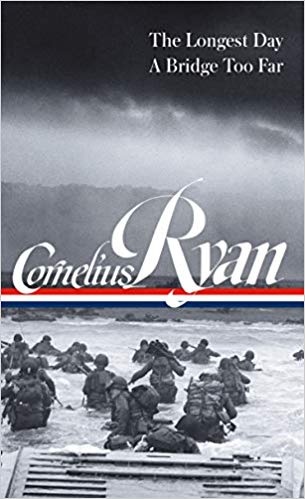 This coming June 6 marks the 75th anniversary of D-Day, when U.S., British and Canadian forces landed in Nazi-occupied France. In the run-up to this milestone, Shelf Awareness will periodically highlight some of the best books about D-Day.
This coming June 6 marks the 75th anniversary of D-Day, when U.S., British and Canadian forces landed in Nazi-occupied France. In the run-up to this milestone, Shelf Awareness will periodically highlight some of the best books about D-Day. 